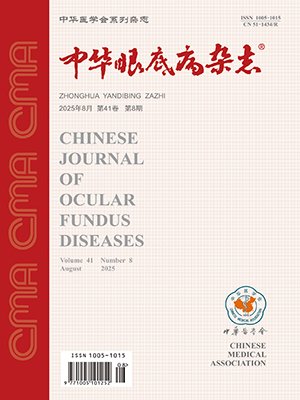Objective To observe the distribution of human photoreceptor cells at the posterior pole, detect the change of density of the cells affected by eccentricity, and analyze the relationship between the density distribution and the visual sensitivity. Methods Twenty human eye cups with the cornea removed were fixed in 4% polyformaldehyde for 1-4 weeks, and the retinal mounts were observed by differential interference contrast microscope to reveal the retinal cellular configuration and density. The inner segments of photoreceptor cells were first observed from the center to the temporal peripheral part of the retinal mounts. Results The highest density of visual cone cells was at the central fovea (134 000-267 000/mm2, mean 198 090/mm2; CV value:18.2%). The density and individual variation decreased rapidly in the peripheral area. The high density area of rod cells was at the 4 mm of the eccentricity, with the highest value of 72 610-182 350/mm2 and with the high density between 3 and 5 mm. Conclusions The inner segment of photoreceptor cells was monolayer, which may tell the cellular absolute value. The high density of retinal cone cells at the central fovea provide the basis of sensitive central visual acuity, which relates to the individual variation and development. The rod cells have the peak density at the eccentricity with 4 mm, and this area has the greatest sensitivity of dim vision.
Citation: CHU Yanhua,WANG Wenji,JIANG Chunhui,et al. Distribution of human retinal photoreceptor cells at the posterior pole of the ocular fundus. Chinese Journal of Ocular Fundus Diseases, 2007, 23(6): 429-432. doi: Copy
Copyright © the editorial department of Chinese Journal of Ocular Fundus Diseases of West China Medical Publisher. All rights reserved




